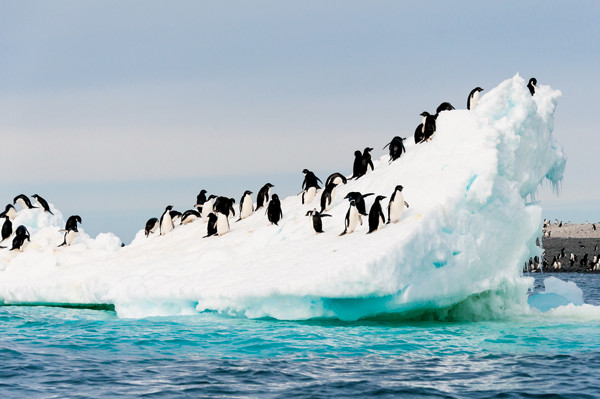
by Mary Caperton Morton Sunday, October 5, 2014

In the past, populations of Chinstrap and Adélie penguins (shown here) increased in number during times of gradual warming in Antarctica. Credit: ©Shutterstock.com/axily.
Penguins’ lives revolve around ice, so it seems they might be particularly vulnerable to changing ice conditions and ice loss. But a new study charting the rise and fall of penguin populations over the last 30,000 years suggests that past populations have actually increased during times of climate warming and retreating ice.
Using genetic markers for genetic diversity, and thus population size and health, researchers led by Gemma Clucas of the University of Southampton in England found that populations of Chinstrap and Adélie penguins actually increased in number during past times of gradual warming in Antarctica. In contrast, the team reported in Scientific Reports, Gentoo penguins on the Falkland Islands off the southern coast of Patagonia were relatively stable, seemingly unaffected by large changes in ice extent.
In their report, the international team of scientists proposed that too much ice can actually be a hindrance to penguins, who need bare ground to breed and raise their young. Extensive ice can also make the journey from the nest to the sea much longer. Today’s rapid ice loss seems to be happening too quickly for modern penguins, however, whose numbers are declining, most likely due to climatic impacts on krill populations, the penguins’ main food source.
“Despite historic warming clearly opening up new opportunities for penguins, we should not assume that current rapid warming caused by human activity is good for penguins as a whole,” Clucas said in a statement. “Evidence from other studies shows that climate change today is creating lots of losers and few winners — with Chinstrap and Adélie populations around the Antarctic Peninsula declining fast.”
© 2008-2021. All rights reserved. Any copying, redistribution or retransmission of any of the contents of this service without the expressed written permission of the American Geosciences Institute is expressly prohibited. Click here for all copyright requests.